Abstract
This paper describes the results of a study set up to investigate factors associated with the high proportions of 'death certificate only' registrations (DCOs) for all cancers registered in south-east England between 1987 and 1989 and to identify those which might be subject to registry intervention. DCOs as a proportion of all registrations (n = 162,131) were analysed by age, sex, district of residence, place of death and survival. DCO registration ratios (standardised for age and sex) were then derived for each of the 56 districts in the Thames Regions. A multiple logistic regression model was generated to estimate the effect of age at diagnosis, tumour survival and patient sex on final source of registration. To minimise the number of dummy variables needed, each of the 56 districts was ranked into quartiles: quartile 1 contained the 14 districts with the lowest age- and sex-standardised ratios for DCO registrations and quartile 4 comprised the 14 districts with the highest DCO ratios. Final source of registration was treated as a binomial trial (case notes or death certificates). The significance of associations was measured using the deviance difference as an approximate chi-square statistic. The effect of each variable on source of registration was estimated as an odds ratio. Interaction terms were also fitted. To estimate the effect of place of death on DCO registrations, a second model was generated for deceased patients only (n = 98,455, adding 'place of death' to the list of explanatory variables already used. A further interaction term was fitted to account for interaction between place of death and district quartile of residence. Around 24% of all patient deaths were registered as DCOs by the Thames Cancer Registry between 1987 and 1989. Of these, 40.9% died in an acute NHS hospital setting, 37.1% died at home, 10.4% died in hospices and 3.4% died in non-NHS hospitals. Increasing age, decreasing survival, district of residence and place of death were positively associated with death certificate registrations. The district effect was sustained in the regression model with significant positive associations shown for DHA quartile of residence. In the deceased group of patients, both district of residence and place of death were independent predictors of DCOs. Death occurring outside the acute NHS hospital setting increased the odds of being a DCO within and across district quartiles. DCOs could be reduced by better case ascertainment in some districts.(ABSTRACT TRUNCATED AT 400 WORDS)
Full text
PDF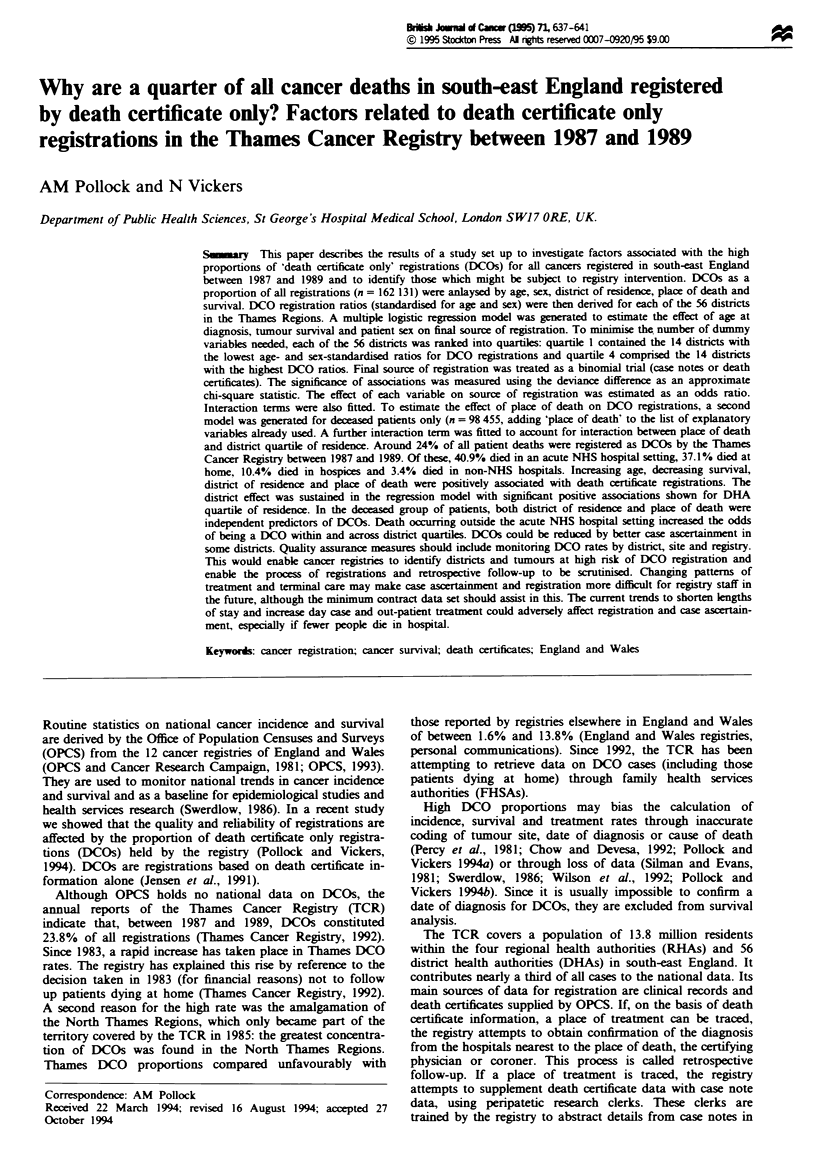
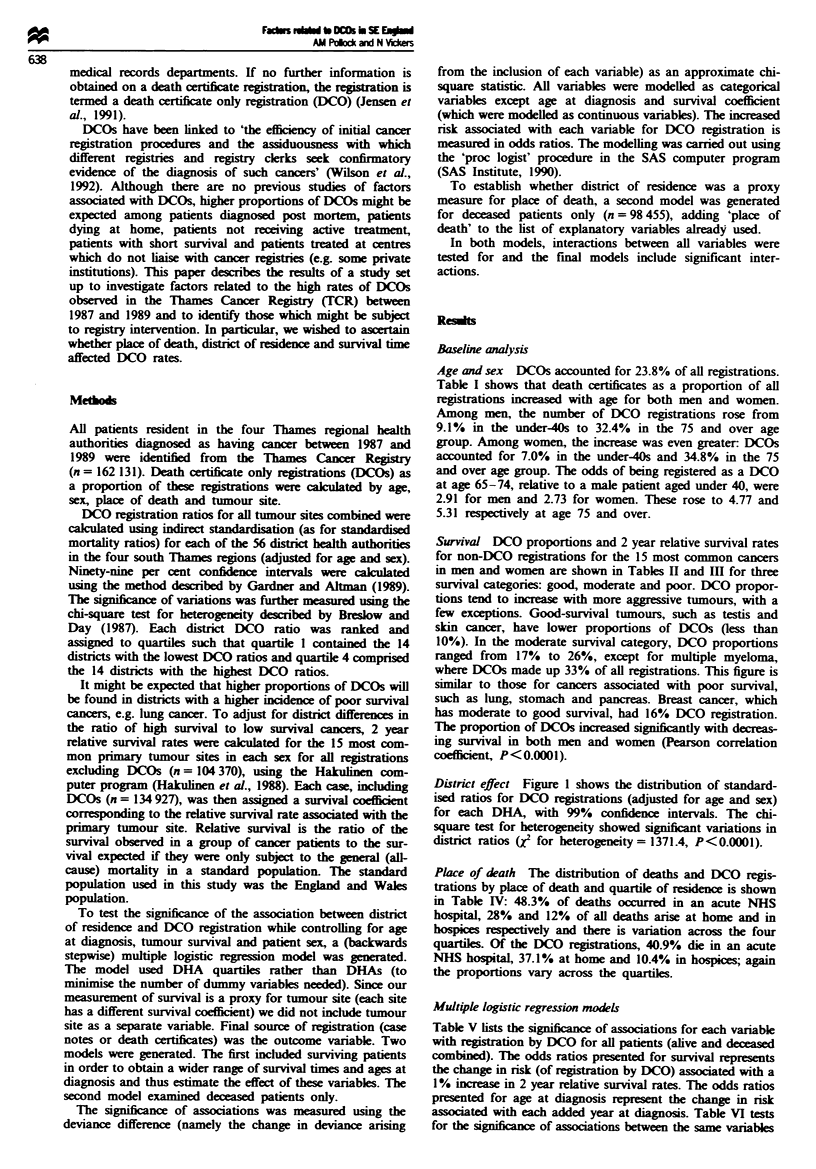
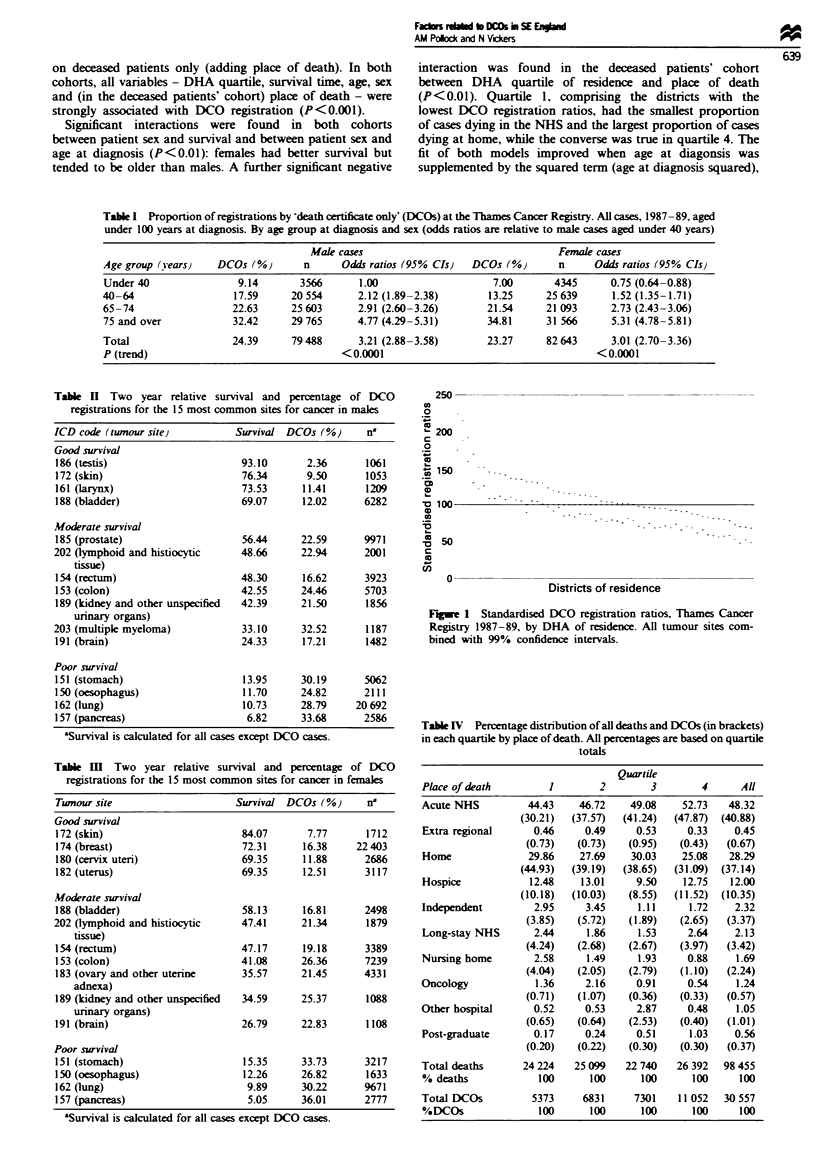
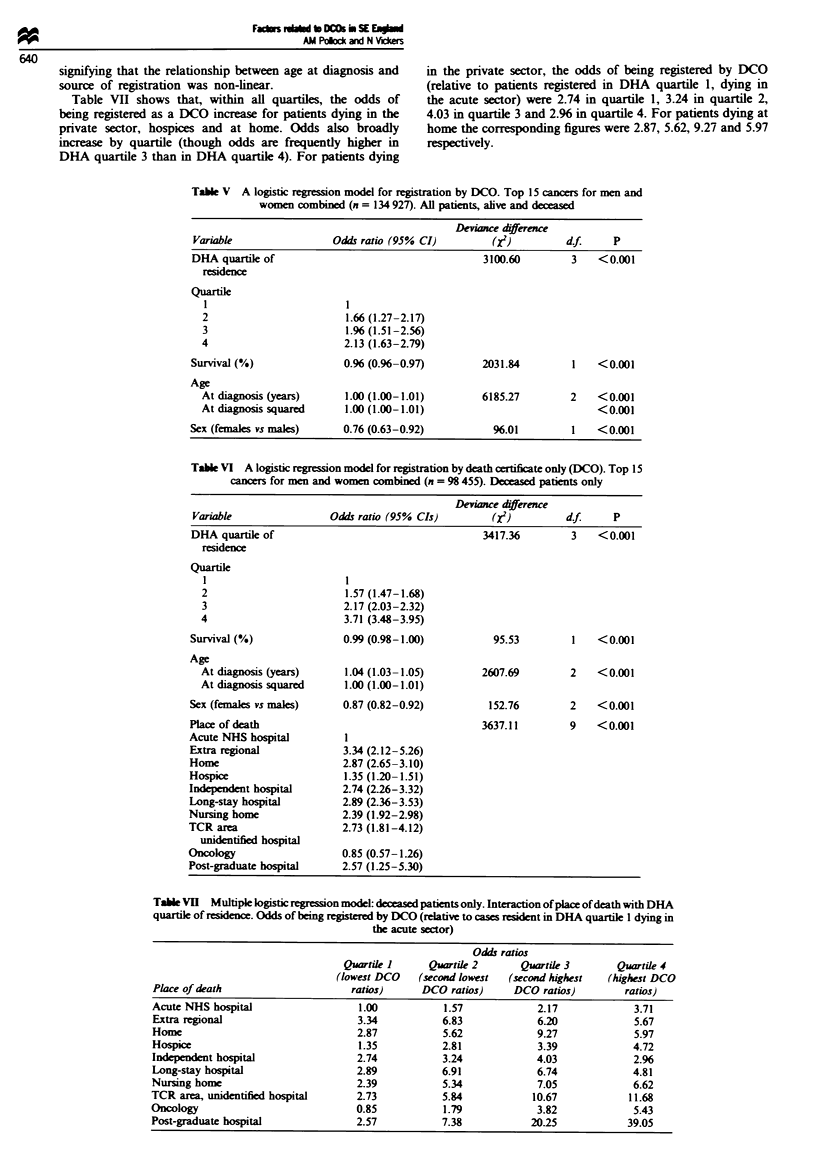
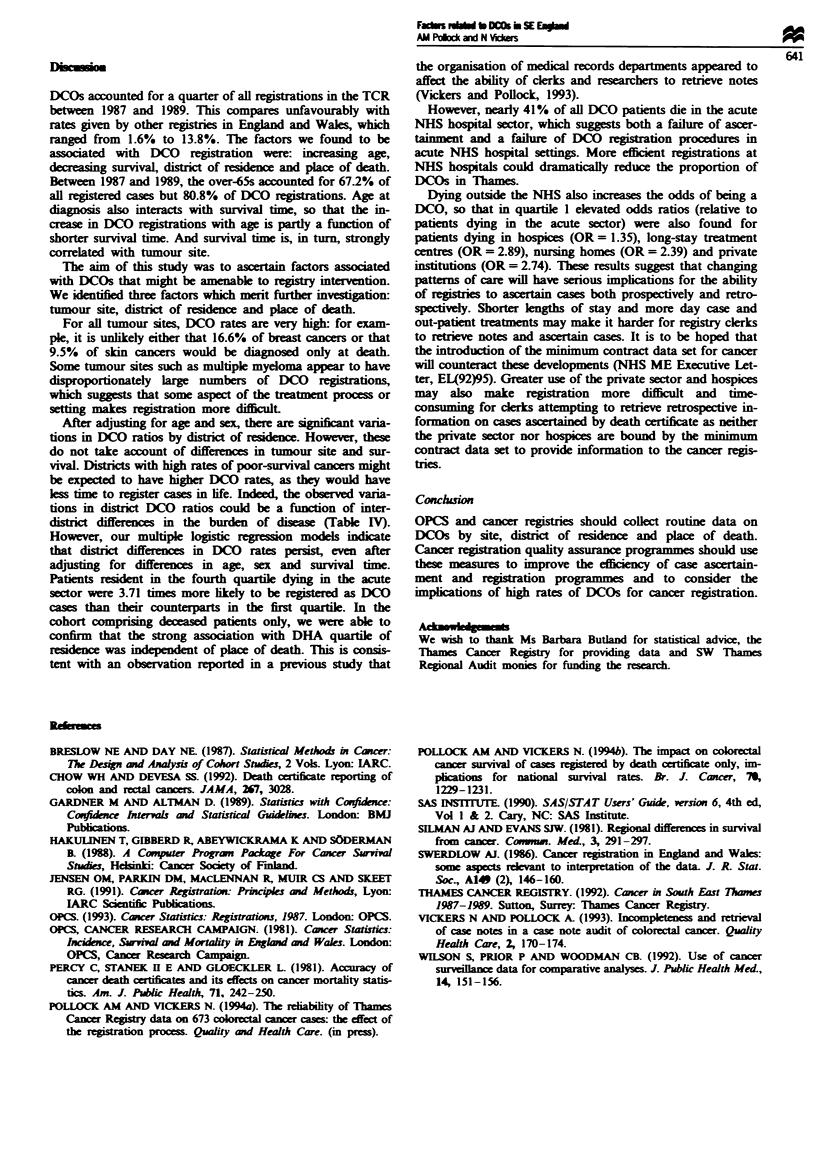
Selected References
These references are in PubMed. This may not be the complete list of references from this article.
- Chow W. H., Devesa S. S. Death certificate reporting of colon and rectal cancers. JAMA. 1992 Jun 10;267(22):3028–3028. [PubMed] [Google Scholar]
- Percy C., Stanek E., 3rd, Gloeckler L. Accuracy of cancer death certificates and its effect on cancer mortality statistics. Am J Public Health. 1981 Mar;71(3):242–250. doi: 10.2105/ajph.71.3.242. [DOI] [PMC free article] [PubMed] [Google Scholar]
- Silman A. J., Evans S. J. Regional differences in survival from cancer. Community Med. 1981 Nov;3(4):291–297. [PubMed] [Google Scholar]
- Vickers N., Pollock A. Incompleteness and retrieval of case notes in a case note audit of colorectal cancer. Qual Health Care. 1993 Sep;2(3):170–174. doi: 10.1136/qshc.2.3.170. [DOI] [PMC free article] [PubMed] [Google Scholar]
- Wilson S., Prior P., Woodman C. B. Use of cancer surveillance data for comparative analyses. J Public Health Med. 1992 Jun;14(2):151–156. [PubMed] [Google Scholar]


